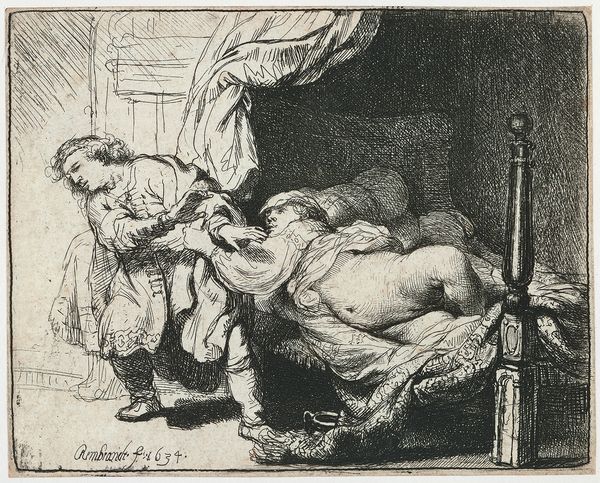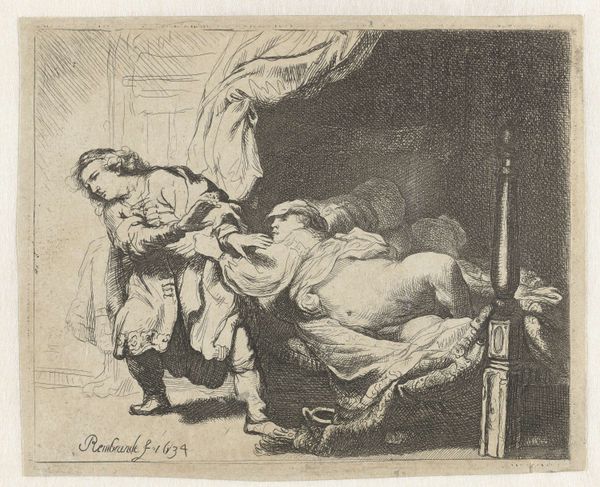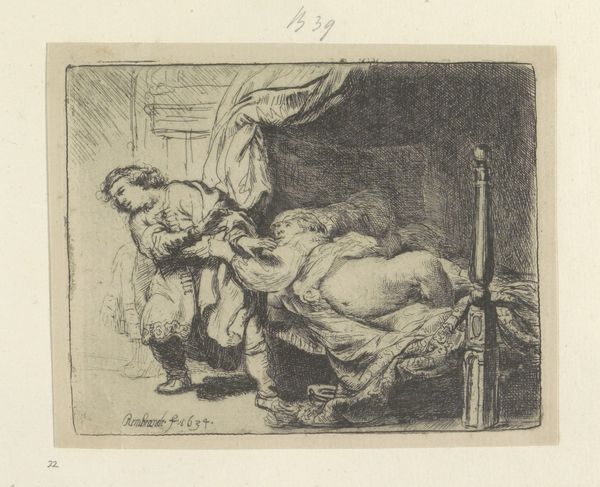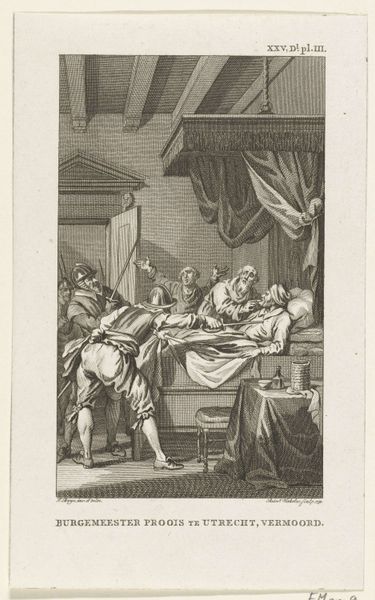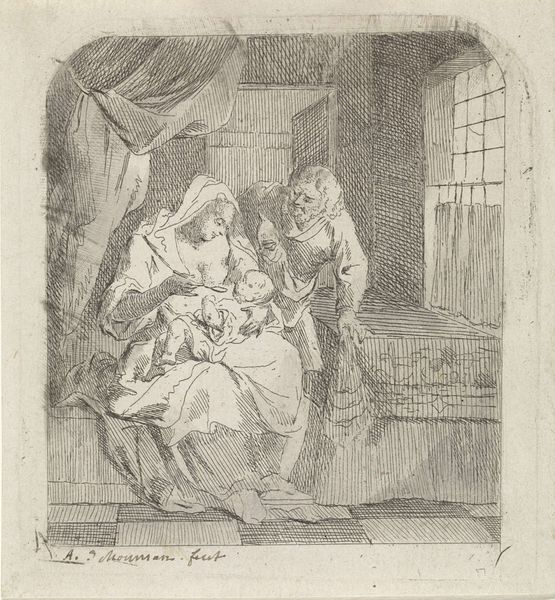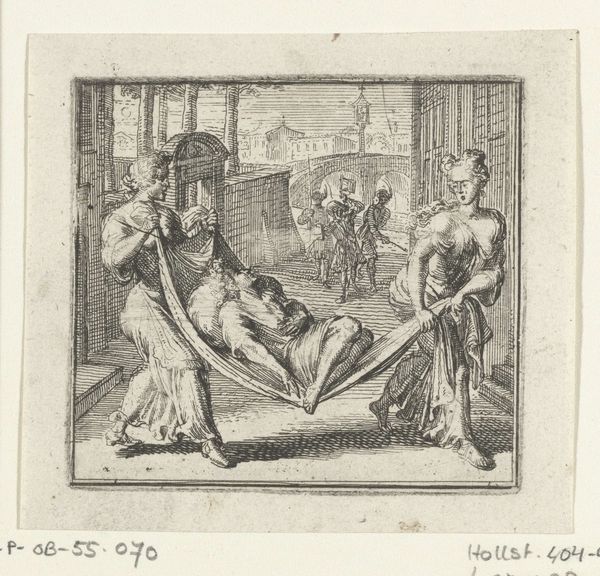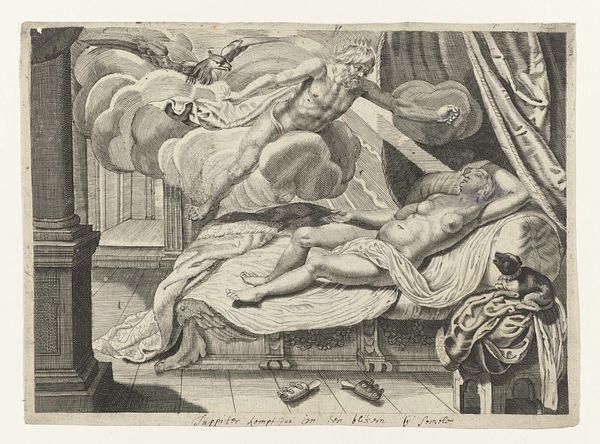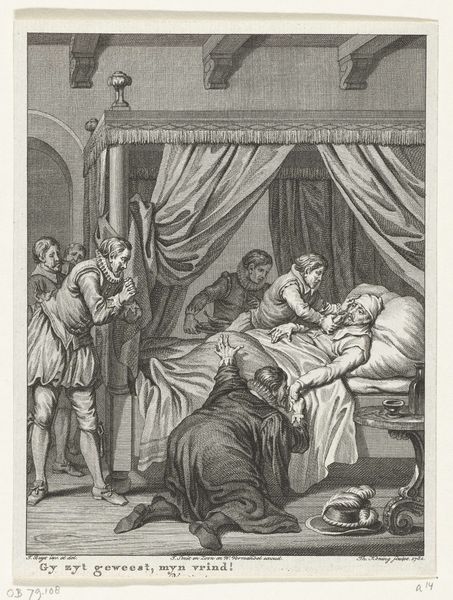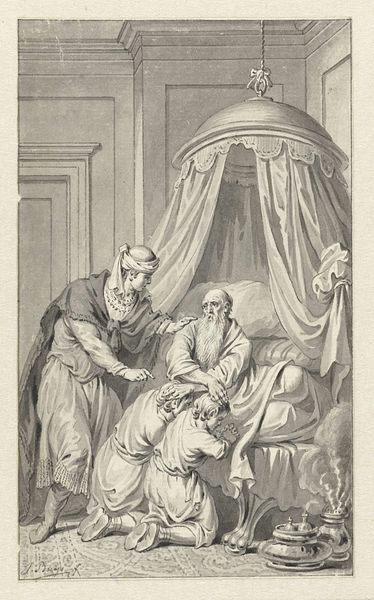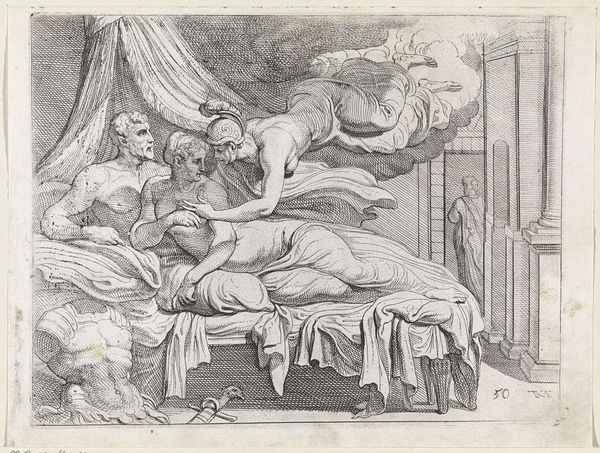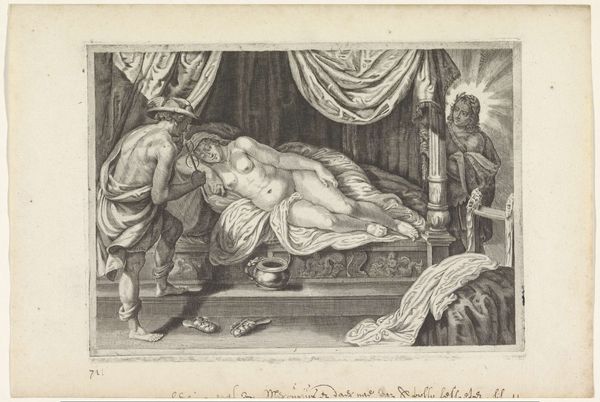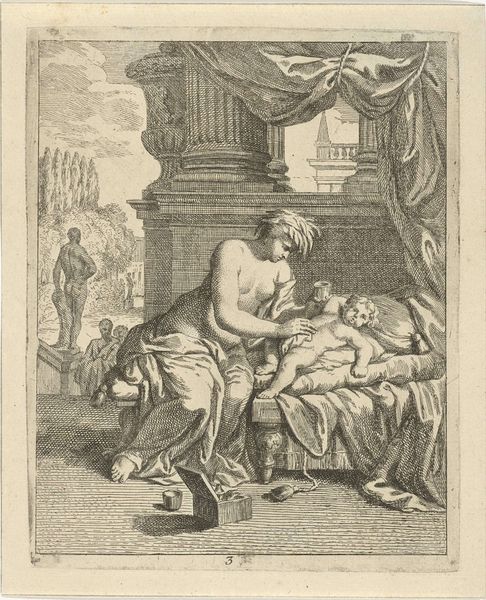
etching
#
narrative-art
#
baroque
#
dutch-golden-age
#
etching
#
figuration
#
history-painting
Dimensions: height 91 mm, width 115 mm
Copyright: Rijks Museum: Open Domain
Rembrandt van Rijn made this etching of Joseph and Potiphar's wife in the Dutch Republic, likely in the 1630s. The image depicts a scene from the Book of Genesis, in which Joseph flees from the advances of his master's wife. Rembrandt uses the visual codes of the Dutch Golden Age to create meaning. Potiphar's wife is depicted as a voluptuous woman, lying in a lavish bed, emphasizing her wealth and status. Joseph, on the other hand, is shown as a more modestly dressed figure, fleeing from temptation. The Dutch Republic was a deeply Calvinist society, and this image can be understood as a cautionary tale about the dangers of lust and the importance of resisting temptation. However, it could also be seen as a commentary on the social structures of the time, in which women were often seen as objects of desire and men were expected to maintain their virtue. Art historians rely on period documents such as religious texts, popular literature, and economic data to understand the social and institutional contexts that shaped it. The meaning of art is contingent on its cultural moment.
Comments
No comments
Be the first to comment and join the conversation on the ultimate creative platform.
